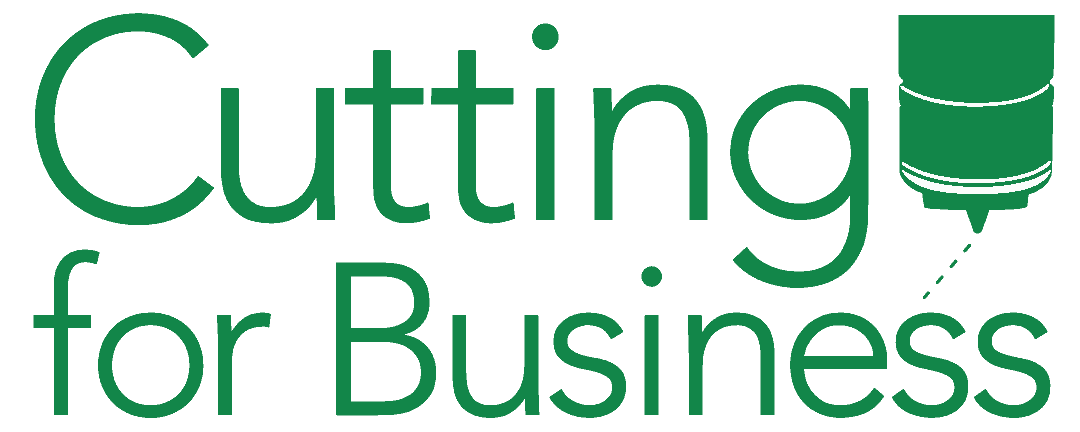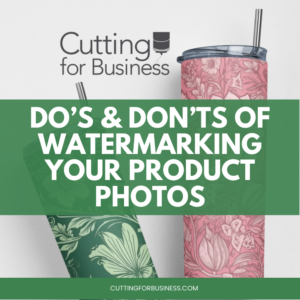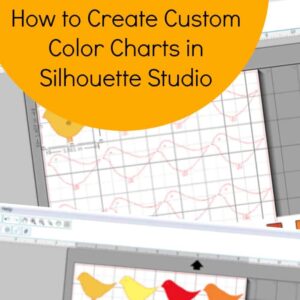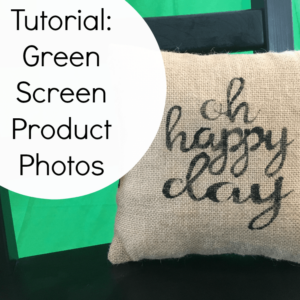10 Product Photography Tips for Silhouette & Cricut Businesses
Affiliate Disclosure: As an Amazon Associate I earn from qualifying purchases. Additionally, I may get commissions for purchases made through other affiliate links in this post.
Good product photos sell your products. Everyone knows that, but getting those great shots can be tough. Here are some of my favorite tips.
10 Product Photography Tips for Silhouette & Cricut Business Owners
- Know your camera. I can’t stress enough, to take better pictures – you have to know how your camera works. Whether you are shooting with your cell phone, a DSLR, or a mirrorless camera; you have to know how it works. Some of my favorite resources are: Apple’s iPhone photography website, CreativeLive’s photography classes, and your camera’s instruction manual.
- Don’t shoot down on your product. If you product is sitting on a table, squat down to the same level as your product to take the picture. If your product is on the floor, lay on your belly to take the photo. Basically, get down to the same level as the product to photograph it.
- Take photos from several angles. This is especially important if you are selling online. Since buyers cannot touch and feel the product, it is your job as the seller to show all aspects of the product for sale.
- Use good lighting. Usually, natural light is best to shoot your product photos. In fact, I usually head out mid day to my driveway to shoot product photos. (After you do this a few times – the neighbors will stop staring – I promise!) If you can’t make it outside – invest in studio lighting like these inexpensive lights with umbrellas.
- Invest in appropriate backgrounds. While we will tackle inexpensive backgrounds later in the week, it bears saying that you should not take photos with overly busy or reflective backgrounds, wrinkled comforters or blankets, or carpet. This list might sound basic and like common sense, but a quick search of Etsy will provide lots of examples of poor photography. Better options are scrapbook papers for small items or printed photography backgrounds.
- Show your product in use. If possible, show your product being used. If you are selling a tee shirt – photograph it being worn. If you are selling a cup – show someone holding it. If you can’t get people to model your goods, consider using Placeit for mockups.
- Think about scale. Some products can look much larger or smaller than they are in photographs. One culprit is wooden signs. When photographing them, place something in the photo that buyers are likely to know the size of. For example, if you are selling an 8 inch by 8 inch wood sign, hold it in your hands to show it’s small size. In contrast, a 40 inch by 40 inch wood sign is quite large. Set it in front of a person to show how large it is.
- Use props minimally in your product photos. A few well placed props can add interest to your product photo, but too many become a distraction. For example, a coffee mug could be filled with coffee with a spoon next to it. Or, a Christmas ornament could be photographed hanging on a tree.
- Crop out the excess. Your product photo should star your product. Crop out excessive space around your photo to make the eyes of the buyer go straight to your product.
- Back up your photos. Personally, I prefer to backup my photos to a cloud of some kind (examples include Dropbox, iCloud, and so on). I do not like using external backups because they can fail, get lost, or damaged. For example, if I back up all my product photos to an external drive and store it in my laptop bag and my house burns down – I’ve lost my laptop with the originals and my external drive with my backups. Since I use a cloud, this cannot happen.
Love this article? Save it to Pinterest:
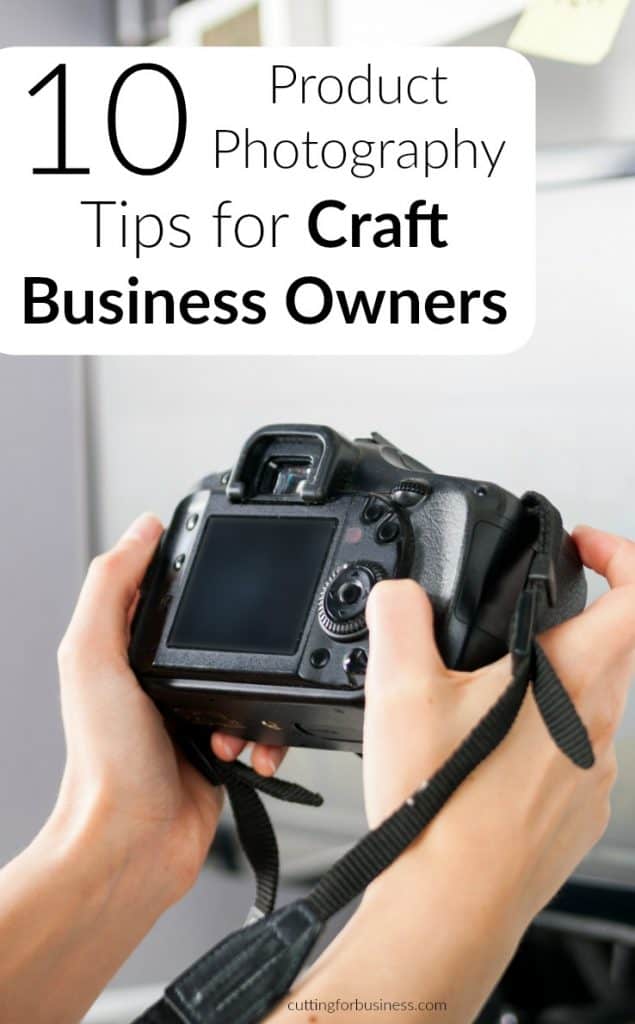
Since 2015, Christine Schinagl has been helping crafters start and run craft businesses through her blog, Cutting for Business. As a Silhouette and Cricut crafter herself, she has a unique take on what works and what doesn’t work in the craft business world. She also enjoys teaching other crafters how to create digital SVG designs, available through the Design with Me series.
